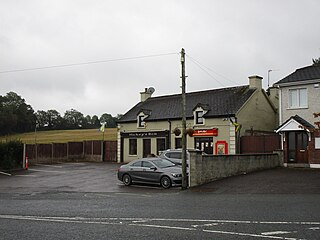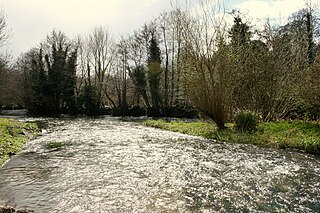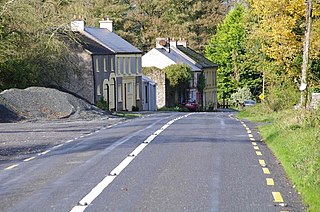
Shanballymore is a small village in north County Cork, Ireland. It neighbours the towns of Doneraile, Kildorrery and Castletownroche, and is off the main route from Mallow to Mitchelstown. Shanballymore is part of the Cork East Dáil constituency.

Buttevant is a medieval market town, incorporated by charter of Edward III, situated in North County Cork, Ireland.

The FitzGerald/FitzMaurice Dynasty is a noble and aristocratic dynasty of Cambro-Norman, Anglo-Norman and later Hiberno-Norman origin. They have been peers of Ireland since at least the 13th century, and are described in the Annals of the Four Masters as having become "more Irish than the Irish themselves" or Gaels, due to assimilation with the native Gaelic aristocratic and popular culture. The dynasty has also been referred to as the Geraldines and Ireland's largest landowners. They achieved power through the conquest of large swathes of Irish territory by the sons and grandsons of Gerald of Windsor. Gerald of Windsor was the first Castellan of Pembroke Castle in Wales, and became the male progenitor of the FitzMaurice and FitzGerald Dynasty. His father, Baron Walter FitzOther, was the first Constable and Governor of Windsor Castle for William the Conqueror, and was the Lord of 38 manors in England, 21 of which he owned as tenant-in-chief. "Castle Dodd", of the Fitzgerald family, appears on a 1736 map of north County Cork.
Ballyhea or Ballyhay is a townland and civil parish in north County Cork, Ireland, on the main N20 Cork–Limerick road, 3.5 km south of Charleville. It lies approximately 110 m above sea level.

Cork East is a parliamentary constituency represented in Dáil Éireann, the lower house of the Irish parliament or Oireachtas. The constituency elects 4 deputies on the system of proportional representation by means of the single transferable vote (PR-STV).

Dromahane is a village located 5 km (3.1 mi) south west of the town of Mallow, County Cork, Ireland on the R619 regional road. Centred on a main crossroads, the village overlooks the Blackwater Valley. As of the 2016 census, Dromahane had a population of 959 people.

Castletownroche is a townland, village, and civil parish in the barony of Fermoy, County Cork, Ireland. It is located on the N72 national secondary road. In ancient times, it was known in Irish as Dún Chruadha, meaning Cruadha's Fort. Castletownroche is located on the River Awbeg in the Blackwater Valley about eight miles (13 km) from Mallow. Castletownroche is within the Cork East Dáil constituency.

Awbeg River is a river in the southern part of Ireland. It is a tributary of the Blackwater River and flows into that larger river at a point in County Cork. Its name comes from the Irish Abha Bheag.

Rockmills is a small rural village located in the parish of Kildorrery, in the Avondhu region of County Cork, Ireland. The village derives its name from the large mill that once operated on the banks of the River Funshion, that runs to the east of the village. Rockmills is part of the Cork East.
James Pain was an English architect. Born into a family of English architects, his grandfather was William Pain, his father James Pain and his brother George Richard Pain. James Pain served as an apprentice to the architect John Nash of London. James and George Richard were commissioned by the Board of First Fruits to design churches and glebe houses in Ireland. In 1833, James Pain became one of the four principal architects of the Board of Ecclesiastical Commissioners. He settled in Limerick, Ireland. Many of his designs were produced in collaboration with his brother George Richard who practised in Cork.

Ballyclogh or Ballyclough is a small village 8 km outside Mallow, County Cork, Ireland. The name Ballyclogh has its origins in the past abundance of stone quarries in the area. Ballyclogh is part of the Cork East Dáil constituency.
The High Sheriff of County Cork was the Sovereign's judicial representative in County Cork. Initially an office for lifetime, assigned by the Sovereign, the High Sheriff became an annual appointment following the Provisions of Oxford in 1258. Besides his judicial importance, the sheriff had ceremonial and administrative functions and executed High Court Writs.
Fermoy is a barony in County Cork in Ireland. It is bordered by the baronies of Orrery and Kilmore to the north-west; Duhallow to the west; Barretts to the south-west; Barrymore to the south; Condons and Clangibbon to the east; and Coshlea, County Limerick to the north. It is bounded to the south by the Nagle Mountains and the valley of the Munster Blackwater. The Ballyhoura Mountains mark the northern boundary. A tributary of the Blackwater, the Awbeg has two branches in its upper stretches; one branch forms the northern boundary while the other near Buttevant, forms the western limit. To the east, lies another Blackwater tributary, the Funcheon. Anomalously, the namesake town of Fermoy is actually in the barony of Condons and Clangibbon. The town with the greatest population in the barony is Mallow.
Robert Cooper Wills was Archdeacon of Cloyne from 1889 until 1919.
Attiwell Wood (1728-1784) was an Irish politician, barrister and Law Officer of the eighteenth century.

Richard Isaac Bruce (1840-1926) was an English colonial officer and administrator serving on India's North West Frontier during the early period of the British Raj. He is notable as the author of The Forward Policy and its Results (1900), part mémoire and biography, part argument supporting a 'Forward Policy' espoused and practised locally by Bruce's superior, Robert Groves Sandeman.

Bartholomew Purdon was a County Cork landowner and a long-serving member of the Irish House of Commons. He was also a Justice of the Peace and served as Deputy Lord Lieutenant of County Cork for many years. He was High Sheriff of County Cork in 1708–9.
The North Cork Junior A Hurling Championship is an annual hurling competition organised by the Avondhu Board of the Gaelic Athletic Association since 1925 for junior hurling teams in North Cork.
Michael Becher was a Bristol-born English slave trader and merchant. Becher was from an established Bristol commercial family, and he took over his father's slave trading firm
Redmond Roche was an Irish politician who sat for Cork County in the Parliament of 1640–1649.











